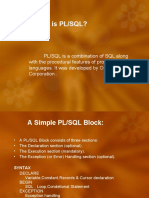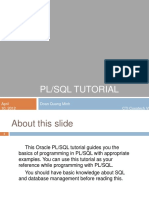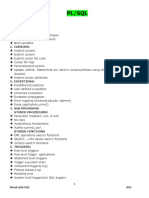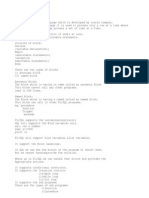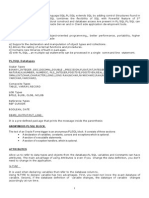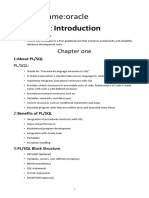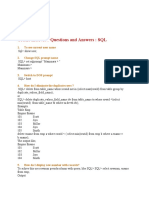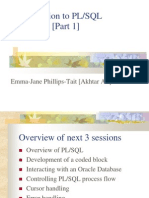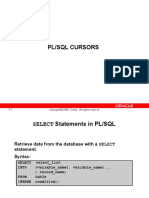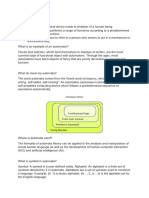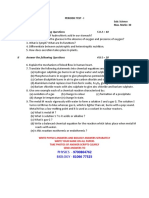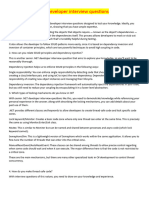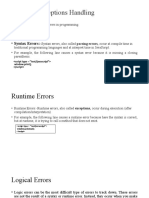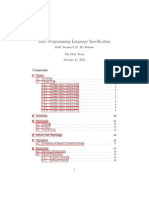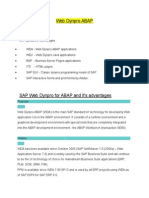0% found this document useful (0 votes)
25 views48 pagesPLSQL Basics
The document provides an overview of PL/SQL including its structure, data types, control structures, and other features. It covers blocks, variables, conditionals, loops, cursors, functions, procedures, packages, triggers and jobs in PL/SQL.
Uploaded by
coolscools123Copyright
© © All Rights Reserved
We take content rights seriously. If you suspect this is your content, claim it here.
Available Formats
Download as PPTX, PDF, TXT or read online on Scribd
0% found this document useful (0 votes)
25 views48 pagesPLSQL Basics
The document provides an overview of PL/SQL including its structure, data types, control structures, and other features. It covers blocks, variables, conditionals, loops, cursors, functions, procedures, packages, triggers and jobs in PL/SQL.
Uploaded by
coolscools123Copyright
© © All Rights Reserved
We take content rights seriously. If you suspect this is your content, claim it here.
Available Formats
Download as PPTX, PDF, TXT or read online on Scribd
/ 48





